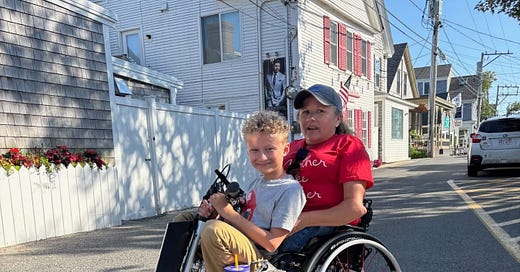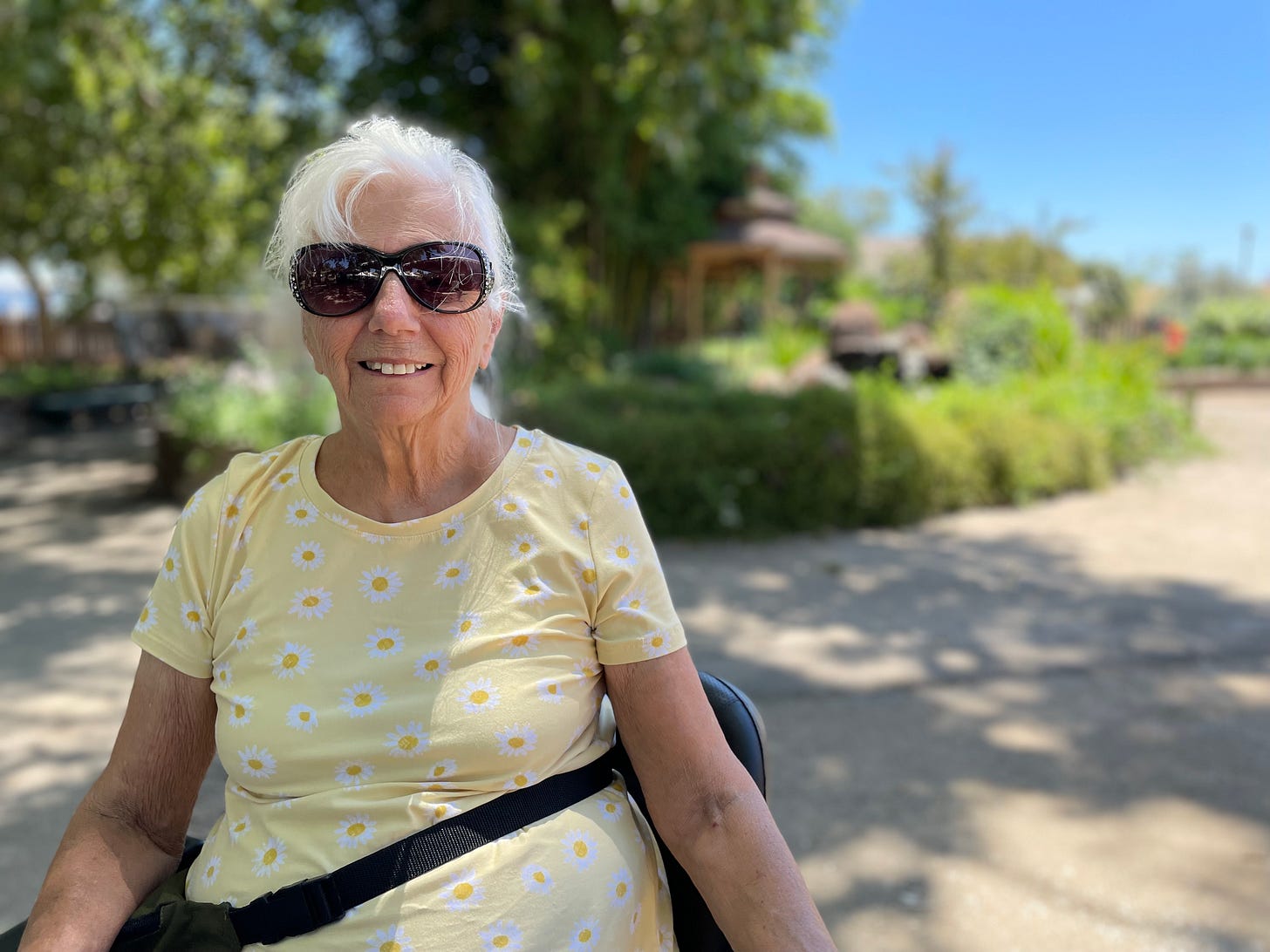Ride & Thrive
When people hear the word “wheelchair,” it often triggers discomfort—especially for those aging into disability or considering mobility support for the first time. For many, it’s associated with loss, limitation, or even the end being near.
But when I think of my wheelchair, I think of something else entirely.
My wheelchair is my ride or die.
The first time I heard that phrase used to describe someone’s most cherished companion, I smiled and thought to myself: that’s how I feel about my wheelchair. It’s been with me since grade school—through childhood, work, parenting, and travel. It’s not a limitation. It’s how I live and contribute to the world.
So when I see older adults or people newly acquiring disabilities wrestling with the idea of using a wheelchair or scooter, I get it. Change is hard. But here’s what I want you to know: there’s pride, dignity, and even joy in choosing the tools that help you keep going. In one word: independence.
And frankly, if society were more accepting, using a mobility aid wouldn’t be seen as a sign of weakness—it would be recognized for what it is: a smart choice.
What if, instead of seeing assistive devices as symbols of decline, we saw them for what they truly are: instruments of connection and access—and a way to continue living fully?
A wheelchair or scooter can transform your day-to-day experience. It can help you keep doing the things you love—spending time with people you care about, gardening, traveling, and participating in your community. It gets you out and engaged. It reduces isolation. And for many, it restores a sense of autonomy.
The world has changed a lot over the past several decades—and while there’s still a long way to go, the Americans with Disabilities Act (ADA) has made a huge difference in making our communities more accessible. Ramps, curb cuts, lifts, and more event spaces have opened up new opportunities for people of all ages and disabilities. The built environment has slowly become more inclusive and less disabling. But accessibility isn’t just about infrastructure—it’s also about embracing the tools that help us move through it.
If you were born before the ADA and haven’t realized how much easier it is to navigate the world by wheels—maybe because you never needed to notice—you might assume a mobility device won’t help.
But the truth is—it will. Trust me.
That includes wheelchairs, scooters, walkers, and other supports.
Side note: My favorite adaptive tool is the Firefly attachment—pictured below. It connects to the front of my manual wheelchair and turns it electric, allowing me to navigate terrain that my wheels alone weren’t built for. It’s truly been transformative. Over the past eight years, it’s helped me roll over loose gravel, hard-packed sand, hills, and all sorts of places I couldn’t freely navigate on my own before. It’s helps me carry my kid—even as he gets too big for it.
These devices and other assistive technology are a bridge between aging and disability communities.
Imagine a world where longtime wheelchair users mentor older adults who are just starting to explore these tools. Where experience becomes empowerment and expertise. Where encouragement replaces shame. Where we honor the fact that disability is not only something people are born with or acquire—it’s something many people age into. Or frankly, people just slow down and could use a little support. And we don’t need to be afraid of that.
I’ve seen firsthand how powerful that shift can be.
A few years ago, my then 84-year-old grandmother came to visit. (Yes, the same grandma who told me never to let her live in a nursing home.) We planned a full day at the State Fair—something she was hesitant about because of how much walking it would involve. She doesn’t use a mobility device regularly—frankly, ever—but like many older adults, long stretches on her feet are exhausting and hard. I suggested renting a scooter for her, and she was adamantly against it.
She gave me every reason why she didn’t need it, why she could manage, why it wasn’t necessary. This is the same woman who helped raise me—a woman who’s watched me use a wheelchair nearly my entire life. Still, the stigma around wheelchairs and assistive devices runs deep, even in the most supportive families.
But I rented the scooter anyway and gently asked her to try it. After a little hesitation, she sat down, tested the controls, and off we went. Within 30 minutes, she started getting the hang of it—chatting more, enjoying the experience. We covered so much ground—seeing exhibits, eating food, and laughing together. And by the time we returned the scooter at the end of the night, she stood up and quietly said something like, “Thank you. I would have been miserable without it.”
That one small change transformed her day. It gave her the ability to stay in the experience, not sit it out.
Even as a lifelong wheelchair user, I’ve needed training and support to adapt and get the most out of my equipment. Whether it’s switching to a new model, learning how to navigate different terrain, or adjusting for changes in my body—there’s always something new to figure out. Wheelchairs—and the way we use them—aren’t one-size-fits-all. They’re tools that should be tailored, adjusted, and refined over time. And just like learning to drive or ride a bike, confidence and control come with practice.
I’ll admit—even though I love getting new wheels (new features, better fit, a smoother ride)—I also have an emotional time letting go of the chairs that have been with me through so much. Over the years, my chairs have carried me across milestones and memories, supported me through busy days and quiet moments alike. Retiring an old chair can feel like saying goodbye to a version of yourself. It’s not just equipment—it’s part of my story. It’s why I consider my chairs my ride or die. They’ve carried me through life—literally—and letting go is never just a technical upgrade. It’s personal. And that, too, is okay.
Of course, getting used to a new mobility device doesn’t always happen the moment you sit down. It takes time, patience, and practice to learn how to use it safely and skillfully. Some people take to it naturally, but most need a little trial and error. The point is not giving up. It will get easier. And it will be worth it. Like anything else in life, it’s about finding what works best for you. The important thing is to give yourself the time and grace to learn. That learning curve doesn’t mean failure—it means you’re figuring out how to continue living.
So if you’re someone aging into disability or simply finding that long walks aren’t as easy as they used to be, I want to say this clearly:
A mobility device isn’t something to fear or be ashamed of.
It’s something to consider. Even if you don’t need it every day. Even if you’re not ready to call yourself a “user.” These tools are here to help you keep doing the things that make life rich.




